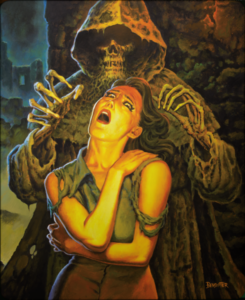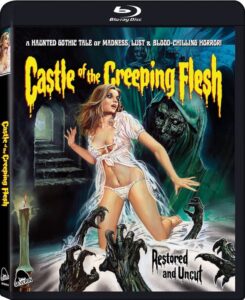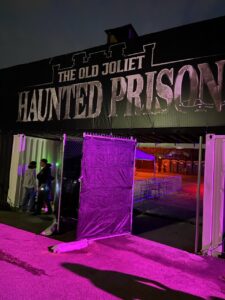Daughter of Dracula (La fille de Dracula) Blu-ray Distributed By: Redemption Films (Kino Lorber) / October 4, 2016
In the early 1970s, cult filmmaker Jess Franco – inspired by the Hammer horror films being made in the UK – revisited the iconic monsters of yesteryear, placing them in the castles and crypts of the Spanish countryside, and bracketing the thrills with scenes of frank eroticism. Daughter of Dracula is inspired by Sheridan LeFanu’s “Carmilla” (which was also the source of Hammer’s lesbian vampire trilogy), but as one might expect, Franco’s version was unlike any treatment the story had yet received.
When the nude body of a murdered woman washes onto the beach, a police inspector (Alberto Dalbes) and a reporter (Fernando Bilbao) focus their attention on the castle of Count Max Karlstein (Composer Daniel White) and his neice (Britt Nichols, The Demons), a beautiful woman who appears to be wrestling with an ancestral curse.
SPECIAL FEATURES:
- Audio commentary by film historian Tim Lucas
- Alternate “safe” footage
- Theatrical trailer
Movie:  (2.0 / 5)
(2.0 / 5)Video:  (2.0 / 5)
(2.0 / 5)Audio:  (2.5 / 5)
(2.5 / 5)Extras:  (2.5 / 5)
(2.5 / 5)Average:  (2.3 / 5)
(2.3 / 5)
Review
I used to think John Carpenter (Director of Halloween, Escape from New York, The Thing, They Live) was a beast for (almost) directing one feature a year from 1978 to 1998. Carpenter’s got nothing on Director Jess Franco whom is credited with directing nine feature films in 1972. NINE! He is credited with directing twelve in 1973, and then another seven in 1974. And in 1975? Another nine films! This certainly sounds like an amazing feat, but I soon discovered that an influx in quantity does not equal in quality.
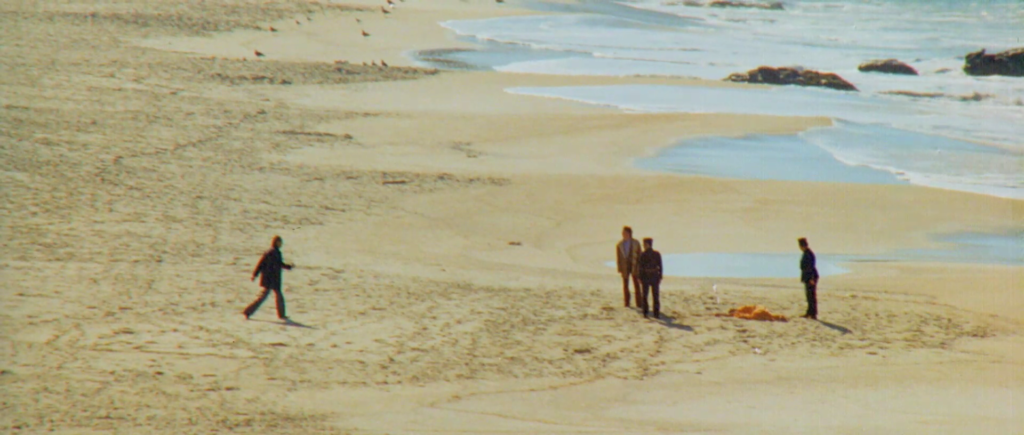 I should start by admitting that I’ve never watched a Jess Franco film. Shocking as that might be, especially considering the sheer number of films he’s credited with (over 200), you would think that I would have accidentally stumbled into one with the amount of movies I personally consume. Alas this is not so. Therefore I can’t comment on this film as compared to his other works, but I can comment on how I felt about this film.
I should start by admitting that I’ve never watched a Jess Franco film. Shocking as that might be, especially considering the sheer number of films he’s credited with (over 200), you would think that I would have accidentally stumbled into one with the amount of movies I personally consume. Alas this is not so. Therefore I can’t comment on this film as compared to his other works, but I can comment on how I felt about this film.
No sir, I didn’t like it!
[amazon_link asins=’B01IO7NXAY,B002MZZTPM,B00IPL2B9Y’ template=’ProductCarousel’ store=’trashmenamaz-20′ marketplace=’US’ link_id=’5b81e8cf-b80f-11e7-96eb-a985a6267f51′]
La fille de Dracula (Daughter of Dracula) is not the worst film I’ve ever seen, but it certainly isn’t good either. My problems with the film are numerous, but if I were to boil it all down the entire film production feels rushed and lazy. After listening to snippets of film historian Tim Lucas’ audio commentary, I’m further bolstered in my beliefs.
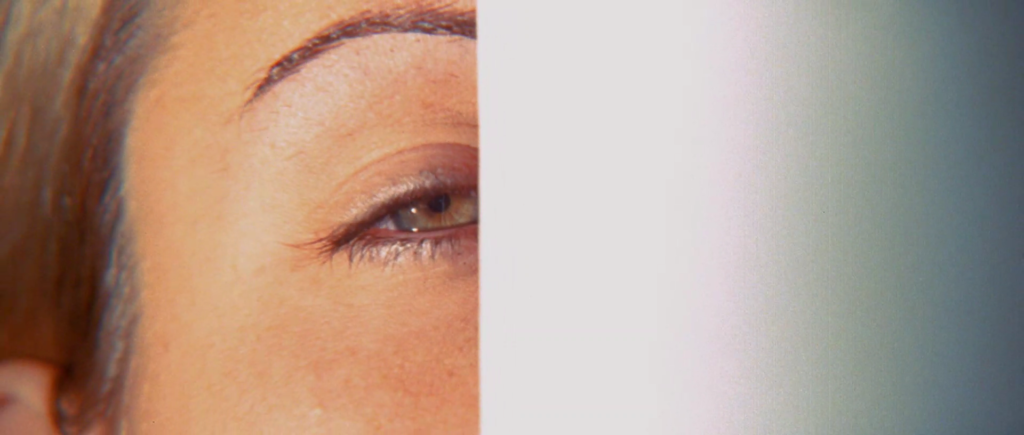 To begin, the opening scene feels tacked on with little regard to story or continuity. The film opens up with a gratuitous scene of a woman undressing and bathing. Close up shots of a watchful eye reveal a hidden voyeur stalking. More bathing, more close-ups and finally we see a close up of a mouth with fangs. The vampire is clearly female and even more obviously is our lead actress Britt Nichols. So what’s the problem?
To begin, the opening scene feels tacked on with little regard to story or continuity. The film opens up with a gratuitous scene of a woman undressing and bathing. Close up shots of a watchful eye reveal a hidden voyeur stalking. More bathing, more close-ups and finally we see a close up of a mouth with fangs. The vampire is clearly female and even more obviously is our lead actress Britt Nichols. So what’s the problem?
Several scenes later Luisa Karlstein (Nichols) arrives at the family castle to attend to her dying mother. Her mother informs her that there is a dark family secret and hands Luisa an old antique key. Luisa sets out to find this mysterious locked door and upon entering discovers a crypt which harbors the body of [Gasp!] Count Karlstein (“Dracula”). Although we never see the Count bite Luisa, it is heavily implied that she is “turned” at this point in the film.
But wait a minute! Luisa was already a vampire in the beginning. Maybe I should assume that the first scene was a flash forward, but it’s not explained or obvious. Oh never mind! Truth be told, I don’t think there is a reason or answer. Franco was probably busy with one of his other nine films during the editing process and a freelance editor just cobbled together the footage into something resembling a movie.
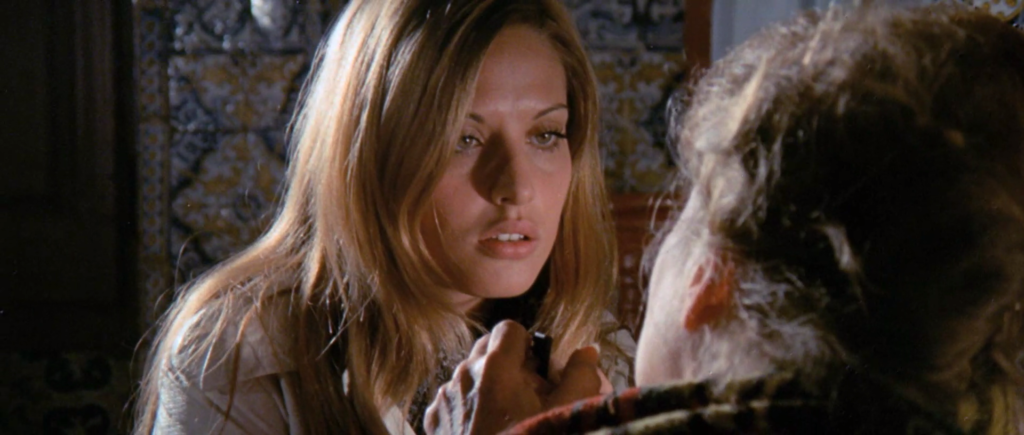 The writing is loose and lazy. As someone who hasn’t seen any other Jess Franco films, I once again turn to the Tim Lucas commentary track for his expertise. According to his information, Franco was known to plagiarize and steal from his own scripts and La fille de Dracula is apparently no exception. This seems most obvious by a story device in which a masked killer in black is murdering people around town. This bit of narrative gives the film’s detective and journalist something to do, but it’s confusing. Is the film implying that there is another killer besides Dracula and Luisa? Nope. The detective spends much of his time following leads and ultimately discovers what the audience knows from the beginning. Chances are Franco had a script about a masked killer and a detective hunting the predator and just shot that to fill in the running time.
The writing is loose and lazy. As someone who hasn’t seen any other Jess Franco films, I once again turn to the Tim Lucas commentary track for his expertise. According to his information, Franco was known to plagiarize and steal from his own scripts and La fille de Dracula is apparently no exception. This seems most obvious by a story device in which a masked killer in black is murdering people around town. This bit of narrative gives the film’s detective and journalist something to do, but it’s confusing. Is the film implying that there is another killer besides Dracula and Luisa? Nope. The detective spends much of his time following leads and ultimately discovers what the audience knows from the beginning. Chances are Franco had a script about a masked killer and a detective hunting the predator and just shot that to fill in the running time.
But the writing isn’t even the worst part. Franco’s directing is haphazard at best. I’ve already mentioned Franco’s failure in explicitly showing Luisa’s “turn” into a vampire. The film’s climax is even worse. During the conclusion of the film the detective and reporter discover the crypt and coffin of Dracula. Next to his coffin is second coffin and because the title of the film is Daughter of Dracula, we can make a logical assumption that the character of Luisa is in coffin #2. As an audience we wait for the big reveal, and anticipate the moment when these men pull back the coffin lid to expose our leading lady. It never happens! Shockingly Franco fails to shoot any footage of actress Britt Nichols in this scene! What we do see is Dracula being dispatched and the second coffin being set on fire. We can only assume Luisa has been killed, but visually the character simply disappears from the narrative without explanation.
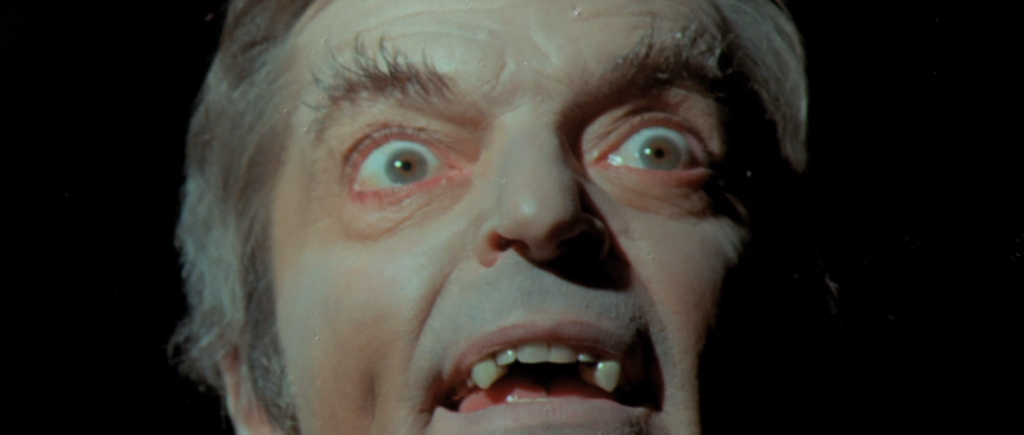 There are other aspects of the film that are never fully addressed or explained. For instance, the vampires in this film don’t seem to be afraid of sunlight. Luisa walks around in the broad daylight and although this may not seem out of the ordinary especially compared to modern vampire tales, the problem is that they don’t even bother to address the matter either. If sunlight doesn’t hurt them then why does Dracula sleep in a coffin in a dark crypt? It’s simply more evidence of an all around lazy production.
There are other aspects of the film that are never fully addressed or explained. For instance, the vampires in this film don’t seem to be afraid of sunlight. Luisa walks around in the broad daylight and although this may not seem out of the ordinary especially compared to modern vampire tales, the problem is that they don’t even bother to address the matter either. If sunlight doesn’t hurt them then why does Dracula sleep in a coffin in a dark crypt? It’s simply more evidence of an all around lazy production.
And we haven’t even scratched the surface in regards to the film’s eroticism, so let’s do that now. Jess Franco earned a reputation as a pornographic filmmaker. Some basic research indicates that this may not have been his desired calling card, but one that stuck throughout his career nonetheless. La fille de Dracula is far removed from a pornographic film, but Franco does not shy away from the female form and despite my criticisms of the film, my expectation was that this film would, at a minimum, work as pure erotic cinema. Unfortunately, Franco manages to fail here as well. There are a couple of lengthy lesbian love scenes between actresses Britt Nichols and Anne Libert. Both actresses are incredibly beautiful women, but despite this, the staging is poor and the actresses don’t appear to be comfortable. It all feels mechanical and lacking any human emotion or passion. One scene endures for an excruciating six minutes and amounts to little more than two beautiful women flopping around one another uncomfortably. Not sexy. Not erotic.
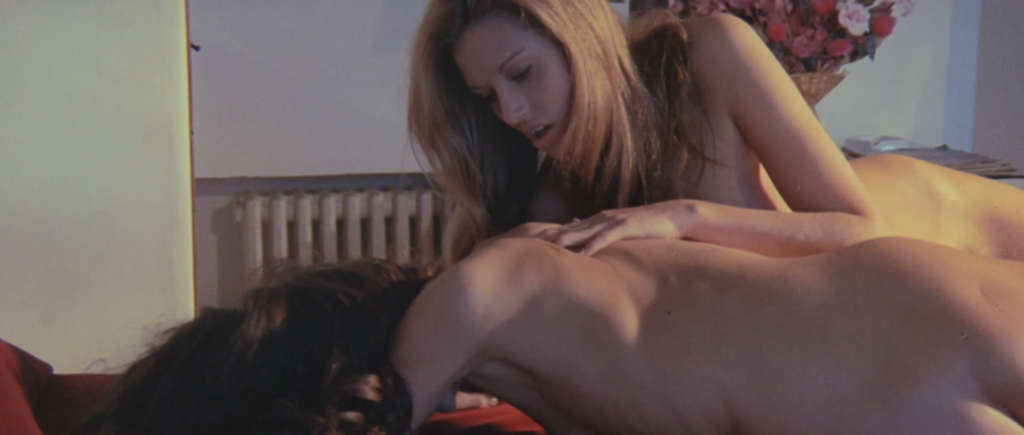 One of the more laughable scenes is an “erotic dance number” in a packed tavern. To start, the tavern looks and feels like a dank cellar. The small room is splashed with red light, making it feel even more seedy. When the dancer begins her routine, she sits in the middle of the floor, takes off her clothes and simply rolls around. There’s no dance, no act, no artistry. It’s just a naked woman rolling around on a brick floor. When’s she’s done, she stands up and walks out of the room. Applause!
One of the more laughable scenes is an “erotic dance number” in a packed tavern. To start, the tavern looks and feels like a dank cellar. The small room is splashed with red light, making it feel even more seedy. When the dancer begins her routine, she sits in the middle of the floor, takes off her clothes and simply rolls around. There’s no dance, no act, no artistry. It’s just a naked woman rolling around on a brick floor. When’s she’s done, she stands up and walks out of the room. Applause!
Is there anything redeemable about the picture? It’s hard for me to say because I get the sense that this feels like a Jess Franco film and any filmmaker can attest that putting your personal stamp and identity on a project is incredibly difficult. And it’s not like the movie completely sucks. Never once did I feel like turning it off, but rather it left me kind of bewildered that it wasn’t better. I’ve seen films ten times worse where a filmmaker poured their entire soul into a project. Franco seems to make average films on a whim, which makes you wonder what he might have achieved if he’d given half a damn.
The Disc
Jess Franco and Cinematographer Jose Climent love to use camera zooms. I’m going to guess this was a tactic to shoot on the quick while creating some kind of kinetic energy in otherwise static scenes. It mostly works, but there are occasions when the editing betrays the trick, specifically when the camera decides to maneuver a crash zoom into our leading ladies’ genitalia or buttocks areas to end a shot or scene. Nothing like seeing a full frame of 70’s bush to end a scene!
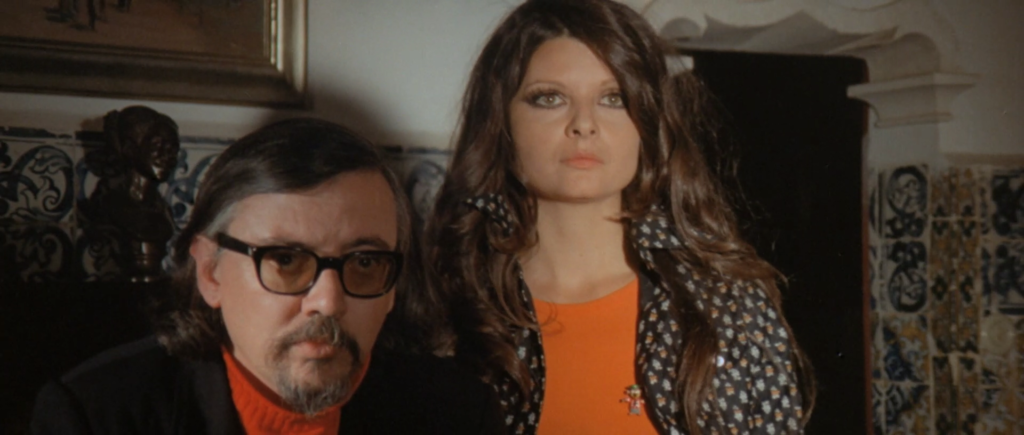 In regards to the actual image quality, the print material is incredibly flawed. Scratches and speckling plague the image while chemical damage encroaches on the frame edges. These inherent print problems aside, the transfer is rather decent. Detail is nice when the image is in focus, and colors range from muted to vibrant, but this is most likely a product of the artistic choices in the wardrobe or cinematography and not due to a bad transfer. However, these film “imperfections” are what I like most about the transfer. It looks and feels like film, not a byproduct of a digital age.
In regards to the actual image quality, the print material is incredibly flawed. Scratches and speckling plague the image while chemical damage encroaches on the frame edges. These inherent print problems aside, the transfer is rather decent. Detail is nice when the image is in focus, and colors range from muted to vibrant, but this is most likely a product of the artistic choices in the wardrobe or cinematography and not due to a bad transfer. However, these film “imperfections” are what I like most about the transfer. It looks and feels like film, not a byproduct of a digital age.
Audio comes in the form of a French language, 2.0 stereo track. English subtitles are available for translation. Like the film itself, the audio mix is just good enough to get from beginning to end. Sounds effects have enough punch but can sometimes feel slightly off cue. Music sets a proper tone but feels strangely cobbled and inserted. The dialogue seems dubbed over as well even though it appears most of the actors are speaking in French. There are many occasions when the sync is slightly off. None of these are absolute deal breakers, but certainly add to Franco’s flair for his fast, cheap, and out of control product.
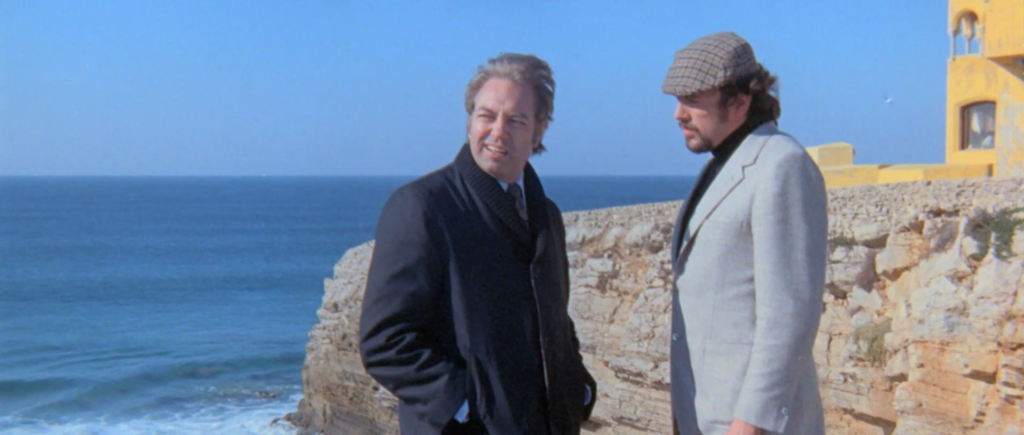 The special features are few but are good for a film this obscure. The centerpiece of the extras is the audio commentary by film historian Tim Lucas. As should be apparent, I used much of this commentary in preparation for this review. It’s a very good listen especially if you want to know generalities about Franco, his filmmaking tendencies, and the cast he worked with. I suspect die hard Franco fans may find already know much of the information, but for the ill informed it was quite enjoyable.
The special features are few but are good for a film this obscure. The centerpiece of the extras is the audio commentary by film historian Tim Lucas. As should be apparent, I used much of this commentary in preparation for this review. It’s a very good listen especially if you want to know generalities about Franco, his filmmaking tendencies, and the cast he worked with. I suspect die hard Franco fans may find already know much of the information, but for the ill informed it was quite enjoyable.
The only other extras are a couple of alternate “safe” footage (less sexually explicit) scenes and a theatrical trailer.
Hidden Treasure/Dumpster Fire?
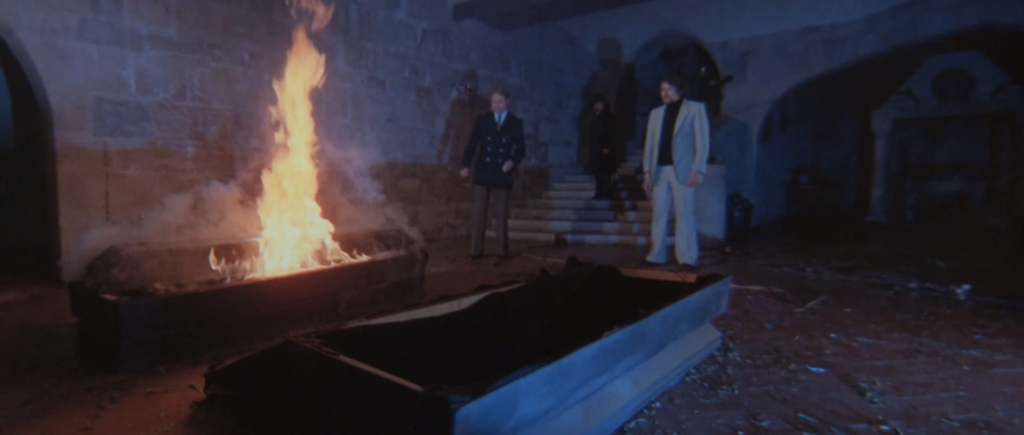 If you’re a Jess Franco aficionado, there’s a lot to like about this release from Redemption (Kino Lorber). The Tim Lucas audio commentary is solid and the technical merits are really good despite some source flaws.
If you’re a Jess Franco aficionado, there’s a lot to like about this release from Redemption (Kino Lorber). The Tim Lucas audio commentary is solid and the technical merits are really good despite some source flaws.
For the non Jess Franco crowd, I’m going to venture a guess that there are better Franco alternatives than La fille de Dracula (Daughter of Dracula). Being one such person I’m a little saddened that this was my introduction to the Franco collection, but with over 200 films to his credit, I’m sure there is something amid the pile of celluloid that I will enjoy.
Hidden Treasure!


